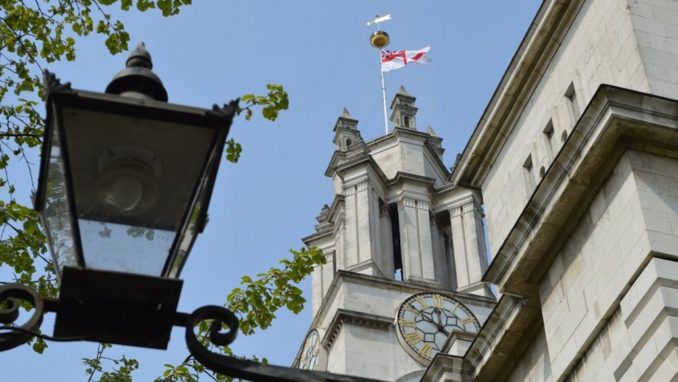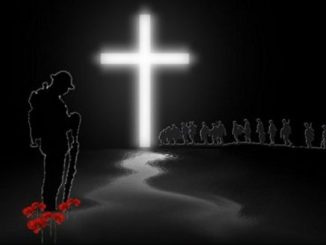In an attempt to win the driest, dullest posted article I present this. The document’s first couple of lines regarding a diversity and inclusion impact assessment may take readers aback.
We all know that Royal Naval vessels, shore establishments and HM Naval Bases fly the white ensign Document: CHAPTER 91 STANDARDS, FLAGS AND COLOURS. Details the flying of aforementioned ensign as well as blue and red ensigns.
Commanding officers are required to take appropriate action i.a.w paragraph 9157 if they suspect unauthorised flying of the white ensign. This can lead to fines or imprisonment.
Chapter 19 paragraph 9148 part a):
This cover flags to be flown by Naval shore locations.
Ensigns were never envisaged to be used ashore but Admiralty order No. 397 of 9th September 1931 acknowledged their use by formalising procedures for shore establishments. The above link details such use.
Chapter 19 paragraph 9148 part b):
This paragraph details the use of the white ensign in civil locations with naval connections and include:
Admiralty Arch
All Saints Church, Burnham Thorpe
Headquarters Royal Yacht Squadron
HMCS Haida, Toronto
HMCS Sackville, Halifax, Nova Scotia.
HMS Belfast
Royal Naval Benevolent Trust Home
St Andrew’s Church, West Tarring
St Anne’s church, Limehouse, London
St Luke’s church, Charlton
St Martin in the Fields church, London
St Mary’s Church, Woolwich
St Werburgh’s church, Hoo.
Cenotaph,
Church of St Mary Magdalene, Gillingham.
The church of St Peter’s and St Paul’s, Gravesend
Memorial to HMS Seraph, The Citadel, Charleston, South Carolina
Trinity House vessels, when dressed (foremast only).
All Saints church, Burnham Thorpe
An obvious one for having a naval connection. Admiral Lord Nelson was born in the village. His father was the rector. Nelson was baptised there and his parents and siblings are buried there. The altar is made from Admiralty donated HMS victory timbers. The church also contains other RN items such as a plaque from HMS Nelson, given in commemoration of an anniversary of Trafalgar.
HMCS Haida, Toronto, Canada
A tribal class destroyer that served in WW2. From 1943 it had two runs on the Artic convoys to Murmansk. It also sank more tonnage than any other Canadian ship. It is the last survivor of the original 27 ships of that class. Thirteen Tribal class destroyers were sunk.
Along with the Sackville, it receives full honours when present day HMC ships pass it.
HMCS Sackville, Halifax, Nova Scotia
Flower Class corvette originally assigned to the mid-ocean escort force of WW2. It defeated two U-boats in a two hour action. One was blown out of the water by depth charges whilst the other received a shell through the conning tower..
St Andrew’s church, West Tarring
Naval connection unknown. May have been a navigational landmark on the south coast at Worthing. It is an 11th Century church, used by smugglers in the 18th and 19th centuries. One of the smallest parishes in England. Seemingly its font went to a cathedral in Melbourne.
St Anne’s Limehouse, London
Formed from part of the parish of St Dunstan’s, Stepney, as the population grew. St Dunstan’s flew the Red ensign as it admitted mariners to the parish for birth, marriages and death notices.
St Anne’s was built by Hawkesmoor (assistant to Wren) from taxes on coal traffic on the Thames and named after Queen Anne. She issued a decree that the church was to be a place of registry for sea captains, in addition to giving it the right to fly the white ensign. The church also has the dispensation that it can fly the white ensign 24/7 and 365 days of the year. Saves trying to daily clamber up to raise and lower the ensign. The golden ball on the flag-pole was a sea-mark for Trinity House for many years.

St Luke’s church Charlton, London
This church was a navigational landmark for ships on the Thames. It flies the white ensign on the saint days of St Luke and St George. Spencer Percival, the assassinated Prime minister and assassinated Edward Drummond (private secretary) are both buried there. Drummond’s murder led to the legal test for sanity, the M’Naughton rules.
St Martin in the Fields, London
This church in Trafalgar Square has ties to Royalty (their home parish and King George 1st was a church warden), Ten Downing street and the Admiralty. Traditionally its bells ring out to celebrate naval victories.
St Mary’s church, Woolwich
The Woolwich dockyard was reputed to be the oldest dockyard in the country. The church has the inscribed achievements of Captain R Leake, Master gunner of England.
St Werburgh’s church Hoo
A church easily visible from the Medway and a good navigational mark for entering what was the Royal Dockyard and Naval establishments of Chatham. Named after a daughter of a King of Mercia and first built in the reign of King Aethelbald in the 9th Century. Is Aethelbert keeping secrets? It contains the Hatchments of Queen Elizabeth 1 and James the 1st.
Church of St Mary Magdalene, Gillingham
A Norman church with links to Chatham dockyard. Used as a navigational mark for ships. Soldiers buried there are from the year of the Dutch invasion. French prisoners from prison hulks are also buried there. Will Adams, the first westerner to visit Japan is buried there ( I thought the Portuguese were the first). Baronet Sir William Peace, Naval architect and manager of Napier’s Govan shipyard also buried there.
Church of St Peter’s and St Paul’s, Gravesend
Now part of Miltonchurch.org.uk. It has a large war memorial and a memorial to Robert Palmer VC. An RAF bomber pilot killed over Germany. There is also a late 18th Century sundial with the inscription ‘Trifle not, your time is short’. Mungo Park(explorer with David Livingstoone) family buried there
The Citadel, Charleston, South Carolina
HMS Seraph, the WW2 submarine made famous by its involvement in Operation Mincemeat is commemorated here. It honours Anglo-Americam Friendship and co-operation during WW2. The Alumni of this college served in the RAF Eagle Squadron of WW2.
Bibliography:
Medway Archives and Local Study centre.
Cityark.medway.org
Medway.gov.uk/timeline.
https://www.royalnavy.mod.uk/-/media/royal-navy-responsive/documents/reference-library/brd2/ch91.pdf
Wikipedia
www.canada.ca/en/navyservices/history/ships
John Salmon, geography.org.uk.
© Martianonlooker 2019
The Goodnight Vienna Audio file
Audio Player



